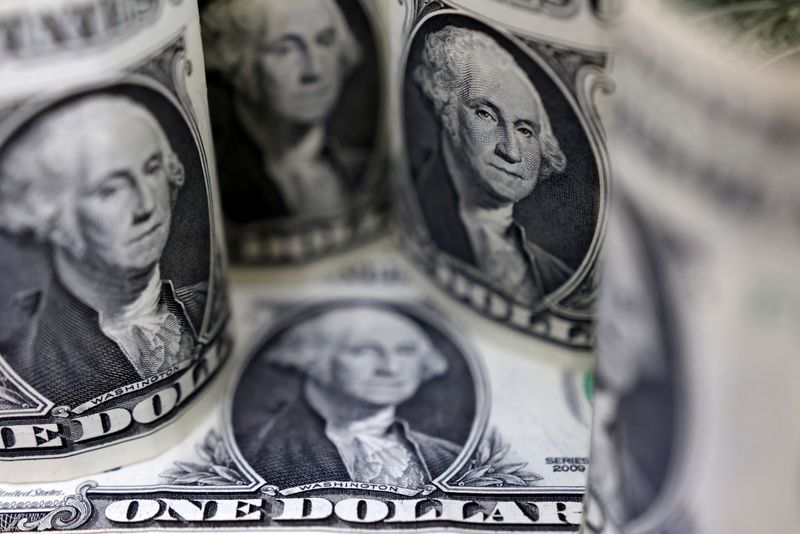U.S. inflation data ahead; Trump nominates new BLS head - what’s moving markets
Investing.com - The U.S. dollar has gained a little over the last few days, but UBS sees these bounces as fleeting, expecting more weakness as the year progresses.
At 06:40 ET (10:40 GMT), the Dollar Index, which tracks the greenback against a basket of six other currencies, gained 0.3% to 98.960, bouncing from a three-year low seen earlier in the week.
Similarly, EUR/USD fell 0.2% to $1.1397, but is still over 5.5% higher over the course of the last month. USD/JPY rose 0.3% to Y141.89, but is down 5.8% this month.
“In recent weeks we have discussed at great length the various forces driving the USD lower in a fashion that has increasingly come to resemble some form of capital flight. This can be seen through lenses of high and rising FX realized volatility even as the USD falls, risk reversal skews in currency pairs like EURUSD bid for USD puts and the ongoing Treasury curve steepening,” said analysts at UBS, in a note dated April 23.
Indeed this week has seen 10- and 30-year Treasury yields rise even as 2-year yields fell, while swap spreads have also tightened still further - these developments argue that the U.S, Treasury longer end is definitely seen as a risky asset.
The Swiss bank previously had USD-bearish forecasts vs most of G10, arguing that the negative capital flows impact of U.S. policies would overwhelm the theoretically positive classical argument that tariffs would lead to a stronger USD.
“While this has broadly played out, in practice it has done so in an even more dramatic fashion than we expected. We extend further our expectations for USD weakness, looking for EUR/USD 1.23 and USD/JPY 130 by end-2025.”
“We believe the market is in a phase of price discovery where it is trying to establish what level of USD and rate differentials provides acceptable risk premium to justify holding U.S. assets,” UBS said.
In addition, the bank expects dramatic spread tightening between the Fed and ECB over the coming two years; our baseline assumes this is priced in by the end of 2025, allowing for EUR/USD to peak at end-2025 levels.
